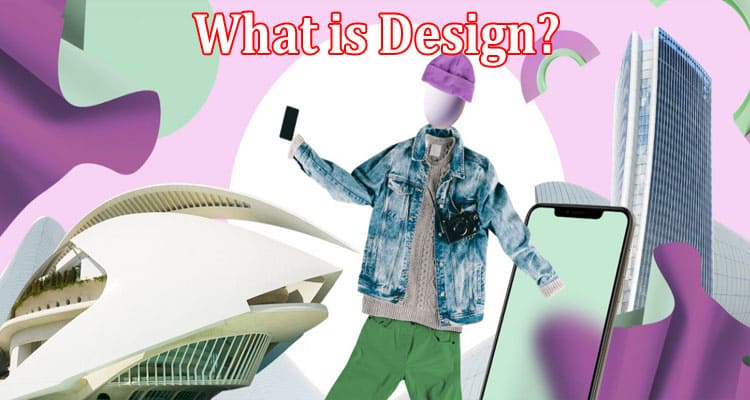What is Design? Introduction to Its History and Types
Design is a fusion of creativity, functionality, and innovation that shapes our world: from city architecture to the interfaces of digital devices. By exploring the design movement timeline, you can learn how design has evolved and influenced various aspects of our society. This knowledge provides a creative foundation and inspiration to draw from, allowing you to create striking and efficient projects.
Keep reading this article to discover the main eras and different types of design that have emerged over time.
Who created design
Design, as a concept, has been created and developed by countless individuals and societies throughout human history. It is not the work of a single person, but the result of collective creativity, problem-solving, and artistic expression of various cultures, designers, artists, and architects across different periods.
Design has evolved over centuries, influenced by cultural, technological, and artistic advancements. Furthermore, it continues to be shaped by the ideas and innovations of countless creative minds in the present day.
Main design eras
Design history is marked by several distinct eras. Each characterized by its unique styles, philosophies, and technological advancements, they influenced the aesthetics and functionality of the objects and environments we interact with today.
Ancient and Classical era
This period encompasses the design styles of ancient Egyptian, Greek, and Roman civilizations. It is characterized by grand architecture, intricate ornamentation, structural design, and a focus on symmetry and balance. Iconic examples of this design era include the Pyramids of Giza, Egyptian hieroglyphs, the Parthenon, Greek pottery, and the Colosseum.
The Ancient and Classical era laid the foundation for many architectural and artistic principles, such as attention to detail, the incorporation of natural elements, and the emphasis on harmonious proportions.
Medieval and Gothic era
Known for its intricate manuscripts, ornate religious art, and European cathedrals, this era celebrated sophisticated craftsmanship and religious symbolism.
A prime example of this era’s stone detailing, stained glass windows, and soaring spires of Gothic architecture is The Notre-Dame Cathedral in Paris. The art of illuminating manuscripts in the Book of Kells also showcases detailed and colorful designs that decorated religious books in the medieval era.
Renaissance era
A period of cultural rebirth, the Renaissance emphasized humanism, scientific inquiry, and artistic innovation. It also focused on the development of art perspective, proportion, and harmony. This era had a significant impact on various fields, including architecture, painting, and sculpture.
For example, Leonardo da Vinci’s Vitruvian Man embodies the Renaissance focus on proportion and the human form. At the same time, Michelangelo’s Sistine Chapel ceiling exemplifies the era’s embrace of anatomical accuracy and grand artistic vision.
Baroque and Rococo era
These styles emerged in the 17th and 18th centuries, featuring elaborate decoration, dynamic compositions, and drama. Baroque was characterized by grandeur, movement, and extravagant and dramatic approaches to art and design, while the Rococo embraced lighter, more delicate forms.
One of the best examples of the Baroque style is Versailles Palace, with its opulent interiors and ornate embellishments. The Rococo era is captured in the works of François Boucher, known for his detailed and whimsical paintings, showcasing lightheartedness, elegance, and charm.
Industrial Revolution and Art Nouveau era
In the 19th century, art was influenced by technological advancements, which led to design functionality, mass production, and the birth of modern design principles. The Crystal Palace, designed by Joseph Paxton, is a symbol of the Industrial Revolution, showcasing innovations in glass and iron construction.
This period also witnessed the rise of Art Nouveau—a movement known for its organic forms, flowing lines, and decorative motifs. It influenced architecture, furniture, and visual arts. The iconic works of architect Hector Guimard, including the entrances to the Paris Métro, epitomize the curved lines and organic forms of the Art Nouveau movement.
Modernist movement era
Embracing simplicity, functionality, and minimalism, the modernist movement shaped the design landscape of the 20th century. Key figures like Bauhaus and International Style architects rejected excessive ornamentation and introduced clean, geometric elements that influenced architecture, product, and typography designs.
Postmodernism era
Emerging in the latter half of the 20th century and going against the strict minimalism of modernism, postmodernism embraced eclectic styles, irony, and a playful mix of historical references. It gave birth to pop art and Memphis Design, challenging traditional notions of design and questioning the boundaries between high and low culture.
One quintessential postmodernist work is the architecture of the Guggenheim Museum Bilbao, designed by Frank Gehry.
Contemporary design era
This era represents the present day, characterized by diverse styles influenced by technology, sustainability, globalization, and the individual expression of designers. It encompasses various trends, from digital design to sustainable and user-centered approaches.
Apple’s iPhone, with its iconic user interface, is one of the best examples of contemporary design that represents the convergence of technology and UX design in the 21st century.
10 different types of design
Design is a broad creative field that encompasses various disciplines. Here are some of the main types of design.
- Graphic design
Graphic designers use visual elements like typography, images, and color to convey messages, boost branding, and enhance communication. They create visual content for both print and digital media, designing logos, brochures, posters, websites, and other marketing materials. Milton Glaser is the father of graphic design, known for the iconic “I ♥ NY” logo and his influential contributions to the creative industry.
- Product packaging design
Product packaging designers create eye-catching and functional packaging, ensuring products stand out on shelves and resonate with consumers. They consider the product’s branding, target audience, and market positioning to design packaging that protects the product and effectively communicates its essence and value to potential buyers. The father of product packaging design is Walter Landor, a renowned designer and branding expert.
- Interior design
Interior designers create functional and aesthetically pleasing living and working spaces. They consider space planning, color palettes, lighting, furniture selection, and materials to create harmonious and inviting interiors. One of the fathers of interior design is Elsie de Wolfe, known for her innovative and glamorous projects.
- Fashion design
Fashion designers create clothing and accessories, including the design of apparel, footwear, and textiles. They make sketches, select fabrics, and create patterns. The designs often reflect current trends, cultural influences, functionality, and the creator’s vision. Coco Chanel is a pioneering fashion designer who revolutionized women’s fashion with her timeless designs.
- Web design
Web designers create user-friendly and visually appealing websites. They focus on layout, navigation, color schemes, and typography to ensure a seamless user experience. They also consider responsive design, optimizing websites for different devices and screen sizes. The father of web design is Tim Berners-Lee, the inventor of the World Wide Web, whose work paved the way for modern web design.
- Architectural design
Architects design buildings and structures, considering functional requirements, aesthetics, safety, sustainability, and environmental impact. They work on everything from conceptual design and creating blueprints to overseeing construction and ensuring the final structure aligns with their vision. Frank Lloyd Wright is a legendary architect whose innovative designs shaped modern architecture.
- UX/UI design
UX designers focus on understanding user behavior and creating intuitive and engaging user experiences. They work on user research, wireframing, and prototyping. UI designers, on the other hand, focus on the visual aspects of digital interfaces, designing buttons, icons, and visual elements that users interact with. Don Norman is a cognitive scientist and design advocate known for his work on user-centered design.
- Animation and motion design
Animation designers create moving visual elements, whether it’s for movies, video games, advertisements, or online content. They bring characters, objects, and scenes to life, often using specialized software to create dynamic visuals. The father of animation and motion design is Walt Disney, a visionary who revolutionized animation and entertainment.
- Game design
Game designers conceptualize gameplay, mechanics, and storylines for video games. They consider user engagement, challenges, and overall player experience, working closely with developers and artists to bring their game concepts to fruition. Shigeru Miyamoto is a legendary game designer responsible for iconic video game franchises like Super Mario and The Legend of Zelda.
- Typography design
Typography designers create typefaces, combining aesthetics, legibility, and style. They may design custom fonts or work with existing typefaces, ensuring that the typography used in various book designs and media is visually appealing and easy to read. The father of typography design is Johannes Gutenberg, the inventor of the movable-type printing press, which revolutionized typography and book production.
Bottom line
Design is a dynamic and multifaceted creative endeavor that has evolved over time, reflecting society’s ever-changing needs, tastes, and technological advancements. Exploring its rich history and diverse types can deepen your understanding of the design process, inspire innovative thinking, and empower you to create impactful and meaningful projects.




